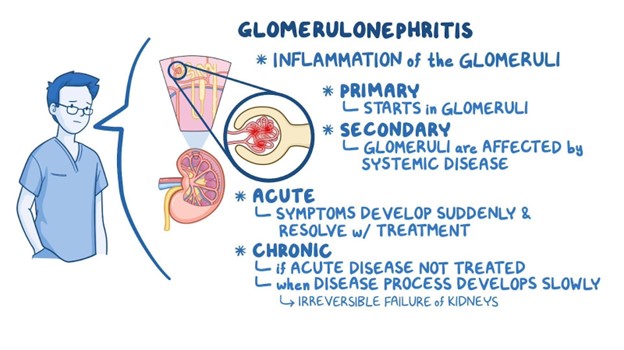A child with growth hormone deficiency (hypopituitarism) is being started on growth hormone therapy. Nursing considerations should be based on knowledge of which of the following:
Replacement therapy may require daily subcutaneous injections
Lifelong replacement therapy will be required
Treatment is most successful if started during adolescence.
Treatment is considered successful if children attain full stature by adulthood
The Correct Answer is A
A. Replacement therapy may require daily subcutaneous injections.
Explanation: Growth hormone deficiency (hypopituitarism) often requires treatment with growth hormone therapy. One common method of administering growth hormone is through daily subcutaneous injections. Subcutaneous injections involve injecting the medication under the skin into the fatty tissue. This is a routine part of growth hormone therapy, and nursing considerations would include educating the child and their family about proper injection techniques, site rotation, and adherence to the treatment schedule.
Explanation for the other choices:
B. Lifelong replacement therapy will be required:
This statement is generally true. Growth hormone deficiency often requires long-term treatment, which may extend throughout childhood and adolescence. However, in some cases, the need for growth hormone therapy might change based on the individual's response to treatment and growth patterns.
C. Treatment is most successful if started during adolescence:
The optimal timing for starting growth hormone therapy can vary depending on the specific circumstances and the underlying cause of growth hormone deficiency. While treatment during adolescence can be effective, growth hormone therapy can also be successful if started earlier in childhood or later in adolescence. The key is identifying and treating the deficiency as soon as possible to promote healthy growth.
D. Treatment is considered successful if children attain full stature by adulthood:
While growth hormone therapy aims to support growth, achieving "full stature" might not always be possible. The goal of treatment is to help the child reach a more typical height based on their genetic potential and individual response to therapy. The success of treatment is determined by improvements in growth velocity and height, rather than necessarily achieving "full stature," which can vary greatly among individuals.
Nursing Test Bank
Naxlex Comprehensive Predictor Exams
Related Questions
Correct Answer is A
Explanation
A. Position the child laterally
Explanation: When a child is experiencing a seizure, it's important to ensure their safety and prevent injury. Positioning the child laterally, also known as the recovery position, helps keep the airway clear and allows any fluids to drain from the mouth, reducing the risk of aspiration. It also helps prevent the child from choking on saliva or vomit.
The other options are not appropriate actions during a seizure:
B. Using a padded tongue blade is not recommended during a seizure. Placing objects in the mouth during a seizure can lead to injury, including damage to the teeth, jaw, or airway.
C. Attempting to stop the seizure is not within the nurse's control. Seizures are caused by abnormal electrical activity in the brain and should not be interrupted forcefully. Instead, the focus should be on ensuring the child's safety and managing the situation until the seizure stops on its own.
D. Restraining the child's arms is not advisable during a seizure. Restraining can cause harm and increase the risk of injury to the child or others involved. It's important to allow the seizure to run its course while protecting the child from harm.
Correct Answer is D
Explanation
A) Absence of proteinuria:
Chronic glomerulonephritis often involves damage to the glomeruli in the kidneys, which can lead to the leakage of protein into the urine, resulting in proteinuria. The absence of proteinuria would be an unexpected finding in a patient with chronic glomerulonephritis. Therefore, this choice is incorrect.
B) Serum phosphorus 4.0 mg/dL (within expected reference range):
Serum phosphorus levels within the expected reference range are not directly related to chronic glomerulonephritis. While abnormalities in electrolyte levels might occur due to kidney dysfunction, serum phosphorus within the normal range is not a hallmark finding of glomerulonephritis. Therefore, this choice is incorrect.
C) Serum potassium 3.8 mEq/L (within the expected reference range):
Similar to serum phosphorus, serum potassium levels within the normal range are not specific to chronic glomerulonephritis. Kidney dysfunction can indeed affect electrolyte levels, but a serum potassium level within the normal range doesn't provide specific information about glomerulonephritis. Therefore, this choice is incorrect.
D) BUN 50 mg/dL (elevated):
Blood Urea Nitrogen (BUN) is a waste product that is filtered by the kidneys. Elevated BUN levels indicate impaired kidney function, as the kidneys are less efficient at filtering and excreting waste products. Chronic glomerulonephritis can lead to progressive kidney damage, which can result in elevated BUN levels due to decreased filtration and clearance. Therefore, an elevated BUN level is an expected finding in a patient with chronic glomerulonephritis.

Whether you are a student looking to ace your exams or a practicing nurse seeking to enhance your expertise , our nursing education contents will empower you with the confidence and competence to make a difference in the lives of patients and become a respected leader in the healthcare field.
Visit Naxlex, invest in your future and unlock endless possibilities with our unparalleled nursing education contents today
Report Wrong Answer on the Current Question
Do you disagree with the answer? If yes, what is your expected answer? Explain.
Kindly be descriptive with the issue you are facing.
